Magnificent Mansions - Catherine Palace
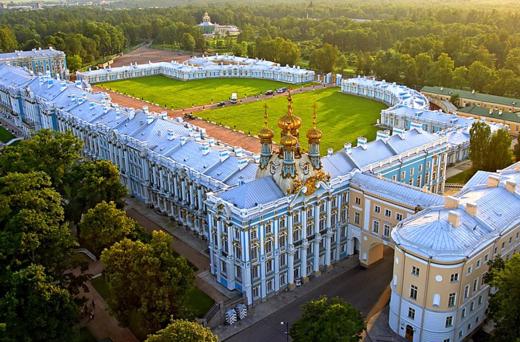
Another gleaming pearl in the string of palaces dotted around the outskirts of St Petersburg is Catherine Palace. Named after Catherine I, the wife of Peter the Great, it was originally a modest two-storey building commissioned by her husband in 1717. She ruled Russia for two years after her husband's death.
The grandeur we see today is owed to their daughter, Empress Elizabeth, who chose Catherine Palace as her chief summer residence. The Palace is often referred to as Pushkin or Tsarskoe Selo (named for the town in which it is located – 30kms south of St Petersburg).
All details below are taken from my own notes, saint-petersburg.com and factsanddetails.com.
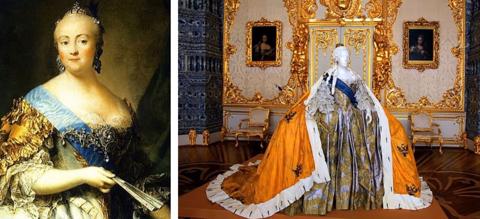
Elizabeth (1709 – 1762), was the Empress of Russia from 1741 until her death in 1762. She came to power as a result of a daring coup that, amazingly, succeeded without bloodshed. She remains one of the most popular Russian monarchs due to her strong opposition to Prussian policies and her decision not to execute a single person during her reign, an unprecedented one at the time.
Empress Elizabeth was renowned throughout and beyond Russia for her fierce commitment to the arts, particularly music, theater, and architecture, turning her court into "the country’s leading musical center". She spared no expense, importing leading musical talents from Germany, France and Italy. The Empress also spent exorbitant sums of money on the grandiose baroque projects of her favorite architect, Bartolomeo Rastrelli, whom she instructed to completely redesign the building on a scale to rival Versailles.
When I lined up with everyone else at the imposing gates in the summer of 2006, I knew I would be completely overwhelmed and I am sure you will agree, Empress Elizabeth aim to rival Versailles was achieved and even surpassed in opulence and grandeur.
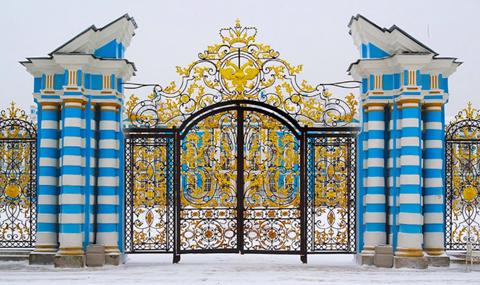
The palace, completed in 1756, is nearly 1km in circumference, with elaborately decorated blue-and-white facades featuring gilded atlantes, caryatids and pilasters designed by German sculptor Johann Franz Dunker, who also worked with Rastrelli on the palace's original interiors. In Elizabeth's reign it took over 100kg of gold to decorate the palace exteriors.
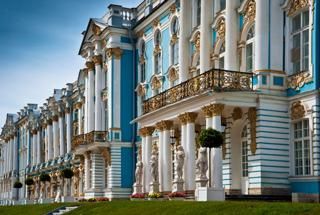
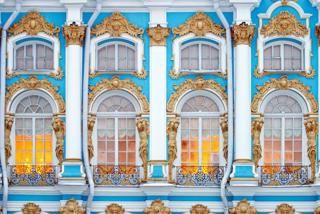
The interiors of the Catherine Palace are no less spectacular. The so-called Golden Enfilade of state rooms, designed by Rastrelli, is particularly renowned and formed the focus of my palace tour.
We entered via the State Staircase which dates from the 1860s. The ornate banisters and reclining marble cupids, gives a taste of what is to come.
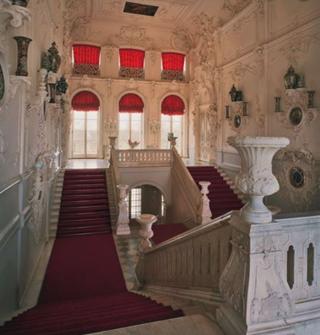
The Great Hall, also known as the Hall of Light, measures nearly 1,000 square metres, and occupies the full width of the palace so that there are superb views on either side. Regular readers of my posts, will recognise the likeness to similar rooms at Versailles, Schonnbrunn and Sanssouci.
The large arched windows provide enough light to relieve the vast quantity of gilded stucco decorating the walls, and the entire ceiling is covered by a monumental fresco entitled The Triumph of Russia.
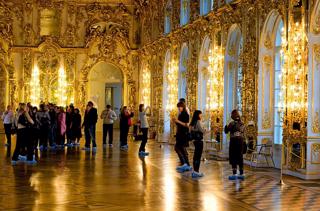
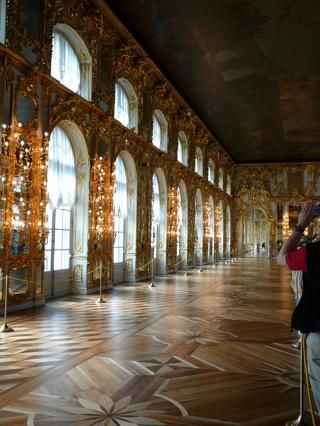
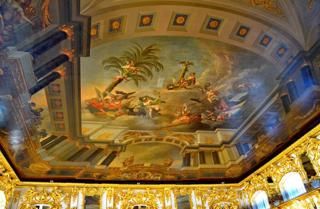
Some closeups of the gilding is shown below, along with the White Dining Room which is equally luxurious but, like many of the rooms in the palace, its grandeur is softened by the presence of a beautiful traditional blue-and-white tiled stove in the corner.
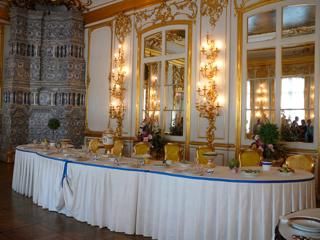
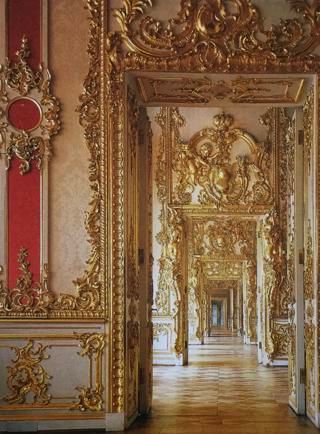
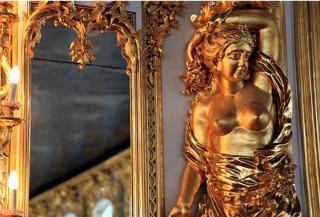
Below, more of the sumptuous interiors.
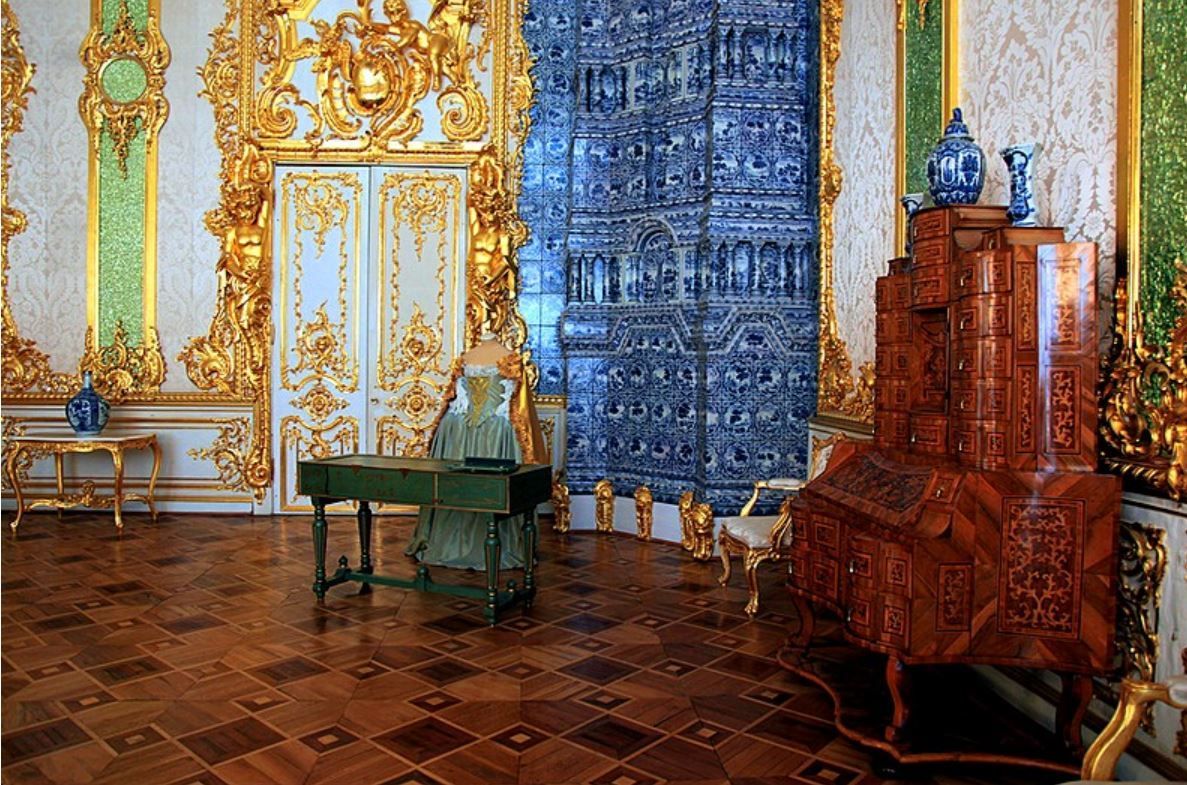
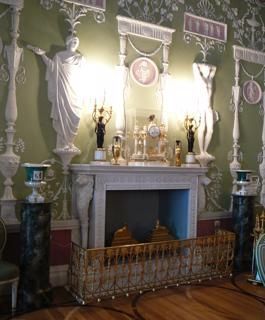
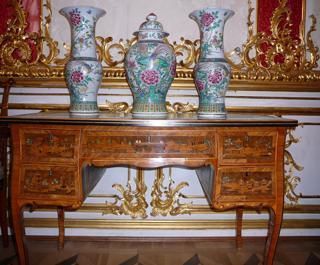
The most incredible room though, is the fabulous Amber Room. Photos fail to capture the sheer magnificence and workmanship.
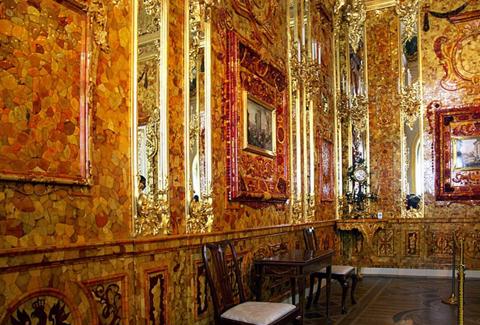
The Amber Room is an ornate, 120-sqm room made from 100,000 pieces of perfectly cut and fitted amber mosaic panels and regarded as the most spectacular work of amber art ever made and the largest work of art ever made from material labeled as a gem. [Sources: Elizabeth Kolbert, The New Yorker, April 14, 2003; John F. Ross, Smithsonian].
The Amber Room was commissioned by King Friedrich I in 1701 for his sumptuous City Palace in Berlin and required eight years to complete under the guidance of the master craftsman Gottfried Wolfram, French jeweler Tusso and architect Andraes Schlüter. In 1711, the panels were placed in a room where Friedrich played ticktacktoe and piquet games with his friends!! He died in 1713.
The Amber Room was presented as a gift from King Friedrich Wilhelm I of Prussia (King Friedrich I’s son) to Peter the Great of Russia in 1716. Friedrich Wilhelm I reportedly gave the room to Peter to cement an alliance with Russia.
Despite what we saw at Peterhof, apparently Peter the Great was not so fond of extravagance himself! The amber panels were considered too opulent and flashy for his taste and were stored away in their boxes.
The panels were not taken out until 1740 when Empress Elizabeth decided to build a special room for the amber, which was completed in 1755. The room was designed so the amber blazed with golden light in the setting sun.
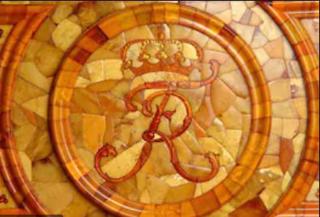
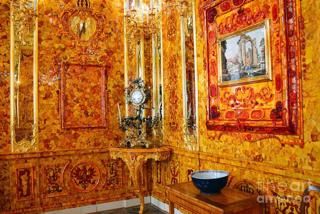
In 1941, when German troops took Catherine Palace, the Amber Room was dismantled in 36 hours, and shipped to Konigsberg in a tawdry pretence at historical fidelity. As the Nazi war machine crumbled, the panels were crated up and moved out of danger, but their eventual fate, to this day, remains unknown.
In 1982, the order was given to begin the recreation of the Amber Room, a process that took over 20 years and cost more than $12 million. Opened in 2003 by President Vladimir Putin and Chancellor Gerhard Schroeder, the restored Amber Room is a truly unique monument, and a testament to the painstaking care of the craftsmen who worked on it.
I was so fortunate to walk through the restored Amber Room in 2006 - a mere 5 minutes but the intricacy in the detail and the sheer expanse of amber was incredible and the images stay in my mind all these years later.
Regulars met Vera from Firebird Tours, on my post about Peterhof. Her enthusiasm is infectious. I hope you enjoy her patriotism, passion and joy as she takes us around Catherine's Palace in the video below. The beginning is a bit touristy, but its worth it - look out for the glimpse of the Amber Room!
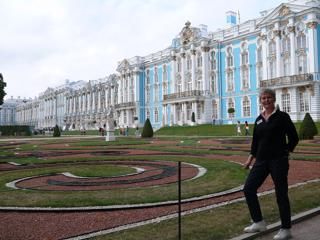
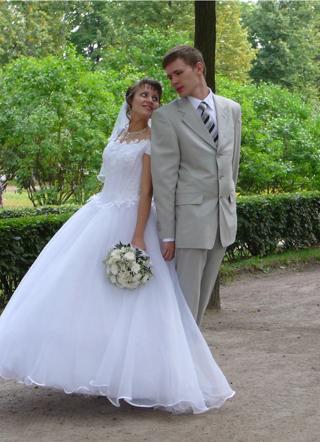
Unlike many of the mansions we have covered, St Petersburg has a history of a mere 300 years, there is no doubt, though, that it has earned world wide acclaim for its luxurious and majestic palaces, mansions and extensive collections of artworks.
There are so many reminders of the splendours which represent the glory days of the Russian Empire. Join me next week in the heart of St Petersburg to tour the most impressive mansion, palace and museum of them all.
